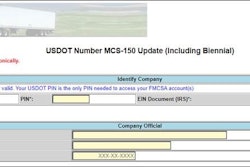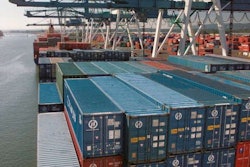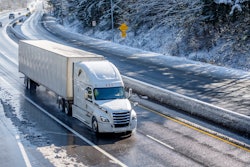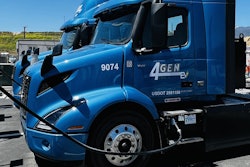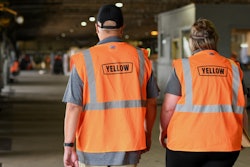Balance. This is not a difficult concept to understand, but it is often a difficult concept to put into practice. Balance, and truly understanding the trade-offs associated with policy decisions, is something our entire nation could use a little bit more of. That likely holds true in politics, social issues, business strategies and personal pursuits.
Throughout the duration of the global pandemic, our supply chain was anything but balanced. The consequence of that imbalance resulted in destocked shelves in stores, backorders for online purchases, consumer buying behavior that can only be described as hoarding, freight that sat on docks waiting for short-staffed drivers to pick it up, and levels of inflation that the country had not seen since the 1970s.
As a reaction to this imbalance, the shipping community was pressed to over-order products, not knowing what they could get or when it would arrive. When those orders finally did arrive, many of those products were "out of season," resulting in a sharp increase of unusable inventory. Several years removed from the peak of that chaos, we are finally beginning to see signs of a return to normalcy in shipping orders. In essence, that is the basic summary of the trucking industry’s latest boom to bust experience, with the boom and the bust being deeper and more dramatic than perhaps any cycle we have ever seen.
The ideal situation would be that the nation has learned a valuable lesson about the fragile nature of the supply chain and the need to fortify our supply chain to keep freight flowing smoothly. That would be ideal, but that is not what appears to have happened. Since the end of the pandemic, the trucking industry has been inundated with an onslaught of rules, shifts in practice and policy pushes that further threaten the stability and effectiveness of the nation’s supply chain.
A few examples
The U.S. Environmental Protection Agency (EPA) is set to enforce two upcoming rules affecting model year 2027 tractors. One rule would substantially reduce nitrogen oxide (NOx) emissions, while the other calls for a meaningful reduction in carbon dioxide (CO2) emissions. These two rules will likely result in a significant increase in the cost of a new tractor, which could place upward pressure on inflation, decrease the availability of new power equipment, and cause more downtime on that equipment until the technology matures.
The EPA is also working on a Greenhouse Gas Phase 3 rule that the industry would plausibly only be able to meet by moving to zero-emissions vehicles. While conceptually zero-emission vehicles sound appealing, in reality these vehicles: 1) would increase the cost of a power unit by about 300%; 2) will be 5,000-plus pounds heavier than a diesel tractor, resulting in more trips to haul the same amount of freight; 3) will see an 85% to 90% drop in range capabilities, compounding the issue of needing more trips to haul the same amount of freight; 4) have seen a sharp increase in equipment downtime due to the lack of developmental maturity in the technology; 5) will require a gargantuan investment for charging infrastructure; and 6) will likely cause significant stress on the nation’s electrical grid, resulting in another huge investment to build more power generation plants and update electrical transmission capabilities.
Whether you are for or against the rapid deployment of zero-emissions tractors, these are the realities facing the current state of technology. Other forms of zero emissions trucks, including the use of hydrogen-based fuels, face similar hurdles.
The U.S. Department of Labor (DOL) has recently issued a new rule aimed at the independent contractor model, which presumedly would make it more difficult for a fleet to engage the services of an independent contractor without the risk of a misclassification claim. This same independent contractor model is the path by which thousands of drivers, perhaps millions of drivers, over the past more than 50 years have taken on additional risk, all for the chance of running their own business and living their American Dream. Recognizing that most of the nation’s trucking capacity comes from independent contractors, inclusive of very small fleets, this rule carries the risk of significant unintended consequences.
Efforts by the industry to implement policy changes around lawsuit abuse have been continuously rebuffed by governing bodies at the federal and state levels, presumedly at the request of the plaintiff’s bar. While the trucking industry has seen a few recent wins in this arena, policy makers have been generally unwilling to address this issue. As a result, "lottery-style" jury awards have skyrocketed. These unsustainable jury awards have driven insurance cost and risk to a point where many trucking companies either cannot be insured or cannot afford insurance.
[Related: CARB rules impacting fleet engine choices]
The California Republic (quoted on their flag) has quickly amassed a tidal wave of new rules, which are now being considered for adoption in a patchwork of states across the country. These rules include the Advanced Clean Truck Rule (forcing OEM’s to sell zero-emissions vehicles), the Advanced Clean Fleet Rule (forcing fleets to buy zero-emissions vehicles), the Clean Truck Check program, the Transportation Refrigeration Unit Rule, the Ultra Low NOx Rule, and the Warehouse Indirect Source Rule, to name just a few. Each one of these rules carries a substantial cost of compliance burden on the trucking industry. In addition, the state is working on legislation that would require trucking companies to report not only their own environmental emissions, but it also may force companies to report the emissions of their suppliers and contractors.
There are more examples that we could reference, but I think you get the idea. It isn’t so much about one rule in particular. When viewed as a whole, the combination of these regulations has the potential to do real harm to the economy. With each one of these rules there is a substantial cost of compliance. After one look at the financial state of affairs in the trucking industry these days, especially the truckload sector, you will realize that there is zero margin for error. Trucking will not be able to absorb any of the costs associated with these rules and will have no choice but to pass these costs to the consumer, which will put substantial upward pressure on continued inflation.
As an industry, we are not just saying "no." We want good rules. Thoughtfully applied regulations are a necessity. Good regulations related to freight transportation keep us safe, protect the environment, protect our employees, safeguard opportunities for citizens to make a living, ensure the efficient flow of goods, and provide economic security. But thoughtfully applied regulations require balance, which appears to be lacking right now.
As an industry, we must actively call on federal and state policy makers to take a step back and reexamine the trade-offs associated with the policies they develop. We must strongly encourage policy makers to recognize they cannot take the supply chain or the trucking industry for granted. We need more voices at state capitols, on Capitol Hill and at regulatory agency headquarters. We are an industry that gets things done. We have never been afraid to pay our share or do our part. Right now we need to get the attention of the policy makers; we need more balance.




